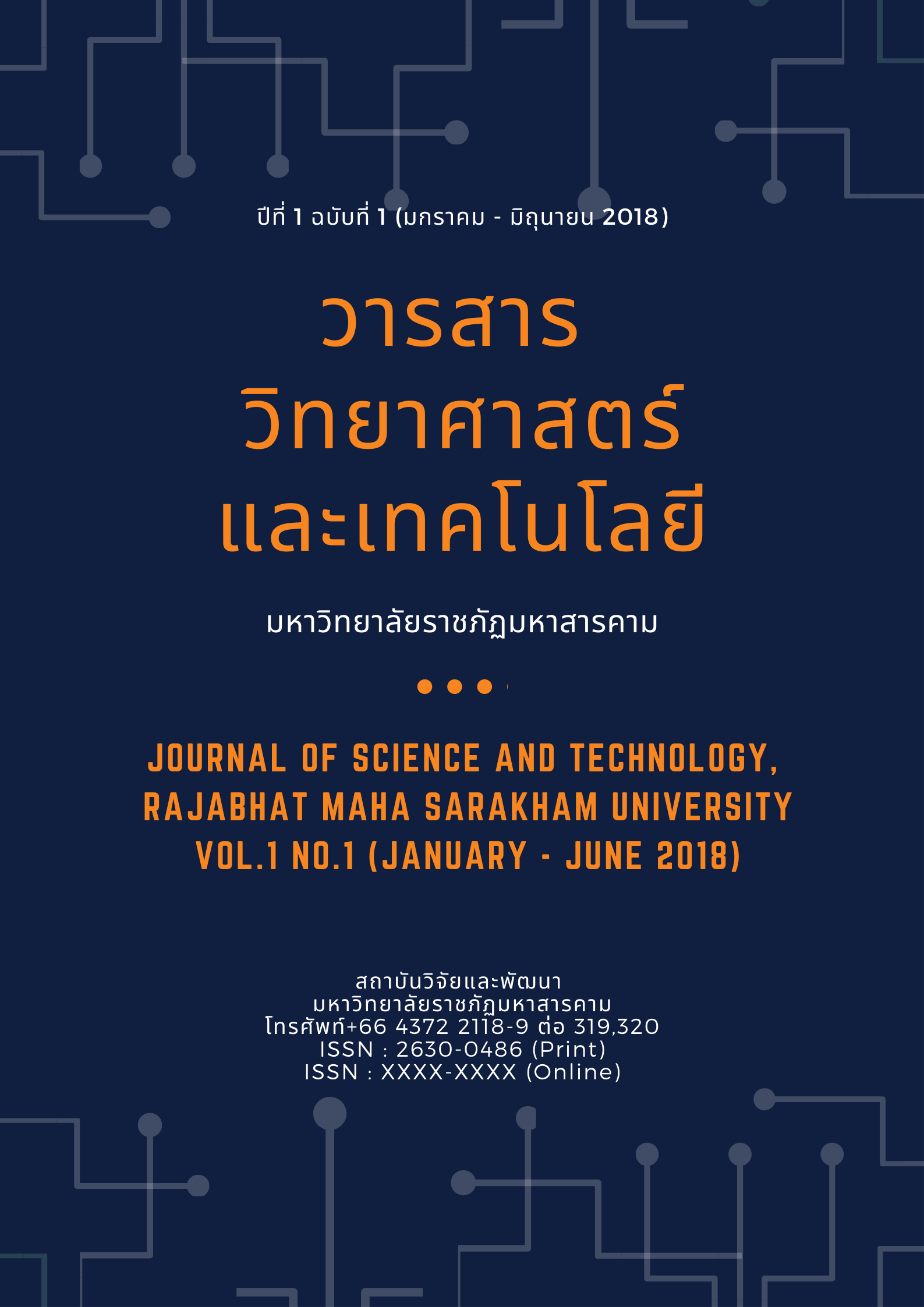DEVELOPMENT OF MODEL FOR DIABETES MELLITUS USING DECISION TREE TECHNIQUE
Keywords:
Diabetes Mellitus, Data Mining, Decision Tree, J48 AlgorithmAbstract
The purposes of the research were to develop a diabetes mellitus model with data mining technique using the decision tree for analysis to finding the diabetes risk factors. The risk factors for diabetes are important information that will support medical agencies to strategies planning for disease prevention to direct to group target. On conducting the research, data were collected from patients at Dan Khun Thot Hospital from Nakhon Ratchasima Province during 2007-2012, there were 4,402 cases. The data are separated into 2 sets that training set and testing set were, 90:10 percent, respectively. The modeling using j48 algorithms that a decision tree technique. On evaluating a performance of models, we use an accuracy. The results showed that the performance of model developed has accuracy 76.14% and rules of classification for decision trees have 97 rules. The risk factors that may cause diabetes were age, gender, status, address, occupational, hypertension history, history of body mass index excess, smoking, drinking and family history of diabetes.
References
กิตติพล วิแสง, สิรภัทร เชี่ยวชาญวัฒนา และคำรณ สุนัติ. (2552). การวิเคราะห์ปัจจัยเสี่ยงต่อโรคเบาหวาน. วิทยานิพนธ์ปริญญาโท. เทคโนโลยีสารสนเทศ. มหาวิทยาลัยขอนแก่น.
กิตติศักดิ์ สุมามาลย์. การคัดกรองสุขภาพเบื้องต้นโดยใช้เทคนิคเหมืองข้อมูล [สารนิพนธ์วิทยาศาสตร์มหาบัณฑิต].กรุงเทพฯ: มหาวิทยาลัยธุรกิจบัณฑิต; 2555. หน้า 1.
ชนวัตน์ ศรีสอ้าน. (2550). ฐานข้อมูล คลังข้อมูลและเหมืองข้อมูล. กรุงเทพมหานคร : บริษัท เอเชียดิจิตอล จำกัด. ประเทศไทย.
พวงทิพย์ แท่นแสง. (2550). การทดสอบประสิทธิภาพการทำงานของอัลกอริทึมไมนิ่งกฏสำหรับจำแนก. วิทยานิพนธ์วิทยาศาสตรมหาบัณฑิต บัณฑิตวิทยาลัย สถาบันเทคโนโลยีพระจอมเกล้าพระนครเหนือ.
เอกสิทธิ์ พัชรวงศ์ศักดา. 2557. การแบ่งข้อมูลเพื่อทดสอบประสิทธิภาพของโมเดล. สืบค้นจาก: http:// dataminingtrend.com/2014/data-mining-techniques/ cross-validation/.
Bhargava, N., Sharma, G., Bhargava, R., and Mathuria, M. (2013). Decision tree analysis on j48 algorithm for data mining. Proceedings of International Journal of Advanced Research in Computer Science and Software Engineering, 3(6).
Dunham, M. H. (2006). Data mining: Introductory and advanced topics. Pearson Education India.
Patil, T. R. and Sherekar, S. S. (2013). Performance analysis of Naive Bayes and J48 classification algorithm for data classification. International Journal of Computer Science and Applications, 6(2), 256-261.
Quinlan, J. R. (1993). C4.5: Programs for Machine Learning. Morgan Kaufmann Publishers.
Sharma, A. K. and Sahni, S. (2011). A comparative study of classification algorithms for spam email data analysis. International Journal on Computer Science and Engineering, 3(5), 1890-1895.
Zorman, M., Masuda, G., Kokol, P., Yamanoto and R., Stiglic, B. (2002). Mining Diabetes Database with Decision Trees and Association Rules. In Computer-Based Medical Systems, 2002. (CBMS 2002). Proceedings of the 15th IEEE Symposium, 134-139.



